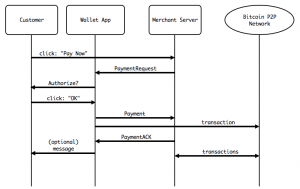Well I attended Bitcoin 2014 in Amsterdam and it was a blast. Met lots of people who I’ve been emailing/skyping with over the last six months so that’s always fun. The conference had a few keynote talks for all and all the rest was broken out into four parallel tracks, always annoying as one wants to attend more than physically possible. There’s no good solution to this classic conference issue, but I’m still annoyed that I missed a few sessions I wanted to attend.
There was a robust collection of exhibitors (approx 40ish) on the show floor and that was fairly impressive for such a young conference. Each session in the tracks had at least 100 or more like 150 attendees. Although I have no other Bitcoin conferences to compare it to, this conference seemed to consist of about 70 percent business oriented fairly mature businesses with the rest being very small startup and random stuff, like bitcoin t-shirts and trinkets.
One of the highlights was Satoshi Nakamoto’s (oops I mean Gavin Andresen’s) state of Bitcoin address. Gavin’s presentation was calm as usual, one of the reasons he’s so good at his job. He noted that his and other core developers tendency is to be very conservative with changes to the core code. Clearly a good choice, since as Bitcoin becomes more mainstream, a LOT of money is reseting on the core code. That being said they are open to the experiments of altcoins in general and when the community is ready core code does get changed. Gavin has been able to turn over the role of chief maintainer to Wladimir van der Laan another core developer and as Gavin expressed, he is now able to start taking off the many hats he was given at the start of the project.
The main keynote talk was by Dr. Patrick Byrne the CEO of Overstock.com. He presented a long incoherent history of philosophy and currency that lasted over an hour and never really tied it all up to Bitcoin. Amusingly in a group of 4 people I was just talking with after the talk 3 out of 4 agreed with me but one loved the talk, so who knows.
The various panels and sessions that were part of the parallel tracks covered every topic imaginable. Some were good, some not so much. But it was great to listen to so many points of view. Clearly however the focus of the conference was business, how can we make money off bitcoin, and why is my new whiz-bang bitcoin idea the next great thing.
I also attended the Annual Bitcoin Foundation Member Meeting which was the usual kind of largish meeting. It was mostly “mother-hood and apple pie” run by Jon Matonis the executive director of the foundation and Peter Vessenes. He introduced the new board members Mssrs. Lee and Pierce who both said hello and how glad there were to be there. The silly Pierce controversy was brought up and address IMHO by Peter Vessenes as “a waste of time”. I couldn’t agree more.
Of interest was the finances of the foundation. It apparently began life with an “endowment” of a large chuck of bitcoins. Which is now worth approximately $4.6million. However the burn rate is now approximately $150K/month as there are now ten employees. IMHO and alluded to by Matonis this is fairly non-sustainable. Approximately 70% of the income comes from industry members and 25% from individual members with the rest from donations. This is typical of other foundations I’m familiar with. Clearly some other type of fundraising and raising of dues will be needed as the foundation covers the running deficit by eating into the endowment, not something you want to do for too long. That being said I do think the foundation is performing a vitally critical role in the bitcoin ecosystem by supporting the development of the core code. One thing different about this foundation unlike the W3C (for example), is that the foundation itself is key to the development of software. The software requires care and feeding and the foundation is the backbone of the Bitcoin software. Satoshi should be a happy camper.

